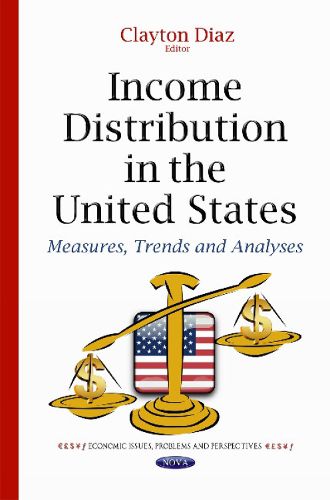Readings Newsletter
Become a Readings Member to make your shopping experience even easier.
Sign in or sign up for free!
You’re not far away from qualifying for FREE standard shipping within Australia
You’ve qualified for FREE standard shipping within Australia
The cart is loading…






The distribution of income in the United States features heavily in congressional discussions about the middle class, program funding and effectiveness, new and existing target groups, government tax revenue, and social mobility, among other topics. Recently, the level and distribution of U.S. income have also been raised in the context of broader macroeconomic issues, such as economic growth. Accordingly, Congress has sought information on the absolute and relative experience of U.S. households, the range of incomes, and their dispersion. This book is a guide to various measures, indicators, and graphics commonly used to describe the U.S. income distribution. It examines the complexities of income measurement, outlines important definitional and data considerations to bear in mind when using and interpreting income statistics, and reviews descriptive statistics commonly used in analysis. It also discusses the Gini index, a popular summary measure of income dispersion and an appendix presents information on additional summary indicators of income dispersion reported annually by the U.S. Census Bureau. This book also examines changes over time and across countries in the shape of the income distribution to afford Members of Congress a broader perspective when deliberating such policy issues as the progressivity of income tax rates, the generosity of social insurance programs, and the level of the minimum wage.
$9.00 standard shipping within Australia
FREE standard shipping within Australia for orders over $100.00
Express & International shipping calculated at checkout
The distribution of income in the United States features heavily in congressional discussions about the middle class, program funding and effectiveness, new and existing target groups, government tax revenue, and social mobility, among other topics. Recently, the level and distribution of U.S. income have also been raised in the context of broader macroeconomic issues, such as economic growth. Accordingly, Congress has sought information on the absolute and relative experience of U.S. households, the range of incomes, and their dispersion. This book is a guide to various measures, indicators, and graphics commonly used to describe the U.S. income distribution. It examines the complexities of income measurement, outlines important definitional and data considerations to bear in mind when using and interpreting income statistics, and reviews descriptive statistics commonly used in analysis. It also discusses the Gini index, a popular summary measure of income dispersion and an appendix presents information on additional summary indicators of income dispersion reported annually by the U.S. Census Bureau. This book also examines changes over time and across countries in the shape of the income distribution to afford Members of Congress a broader perspective when deliberating such policy issues as the progressivity of income tax rates, the generosity of social insurance programs, and the level of the minimum wage.